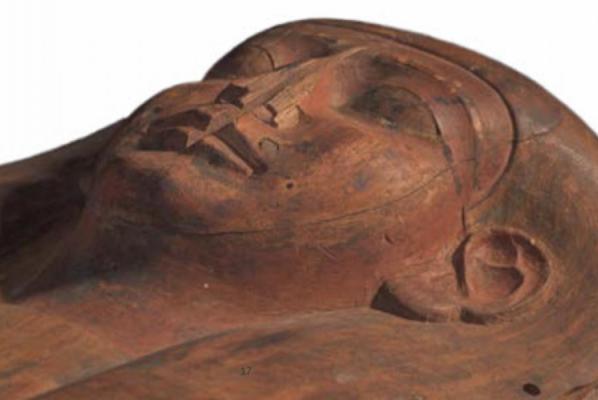
March 27 (UPI) — When a group of Australian researchers at the University of Sydney’s Nicholson Museum pried open a 2,500-year-old coffin belonging to an Egyptian woman named Mer-Neith-it-es, they expected to find only a few bones and bandages. They assumed the coffin was empty.
Instead, the researchers found an Egyptian mummy.
The coffin, boasting hieroglyphics dated to 600 BC, was one of four sarcophagi collected in Egypt and shipped back to Australia by the museum’s founder, Sir Charles Nicholson, in 1860. Upon its discovery, Nicholson made a note that the coffin was empty. He assumed it had been raided.
Over the last century-and-a-half, researchers at the museum have ignored the coffin in favor of more interesting finds — coffins with more ornate decorations and with mummies inside.
It turns out, Nicholson was mistaken.
Though scientists were surprised to find such a sizable jumble of bones and bandages, they couldn’t be certain about what they were looking at. The mummy’s remains were a jumbled mess, but CT scans helped them sort it out.
“A leg bone lies against the coffin’s shoulder, rib bones jut erratically from bandages, part of the jaw lies near the coffin’s feet,” museum curator Jamie Fraser wrote in the March issue of Muse. “Hundreds of tiny faience beads, once laid over the mummy as a beaded net, are scattered throughout.”
Though the tomb was certainly not empty, Nicholson was correct to suggest it had been ransacked. Advanced imaging, only recently completed, suggests the coffin hosts mixed remains. Scientists are now beginning to sort through the details revealed by the CT scans.
“The scanner detected two mummified ankles, feet and toes, consistent with a single person; the fused ends of some of the bones suggest the person was at least 30 years old,” Fraser wrote.
With the state of the tombs’ insides thoroughly documented, scientists can now begin to remove and analyze individual bones.
“The excavations within the Mer-Neith-it-es coffin will enable us to handle the bones directly, helping us understand aspects of diet and disease,” Fraser wrote.
Whether or not the remains inside the coffin are those of Mer-Neith-it-es or not isn’t clear yet, but researchers do have some idea of who she was — evidence suggest the woman was either a priestess or a worshipper.
“We know from the hieroglyphs that Mer-Neith-it-es worked in the Temple of Sekhmet, the lion-headed goddess,” Fraser told USA Today. “There are some clues in hieroglyphs and the way the mummification has been done and the style of the coffin that tell us about how this Temple of Sekhmet may have worked.”






